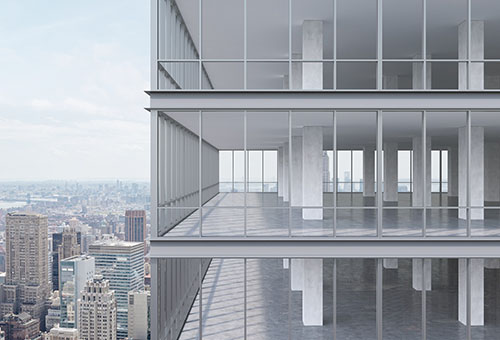Windows can help open up unused spaces
Unlocking the potential of unused spaces for conversion planning applications offers an opportunity for the fenestration sector

While some aspects of sweeping changes to planning laws have come under criticism in recent days, Bureau Veritas has asserted that the decision to remove red tape when changing the use of buildings into residential is undoubtedly a positive one. Under the changes announced by Housing Secretary Robert Jenrick, full planning applications will not be required to demolish unused buildings such as retail and offices and rebuild them as homes.
It is hoped that the changes will help to revitalise town and city centres hit hard by the coronavirus, allowing properties to be quickly repurposed for residential use, supporting local housing need and reducing the pressure on greenbelt land. Homeowners will also be able to add up to two additional storeys to their home through a fast track approval process, providing they meet certain conditions surrounding impact, appearance and neighbour consultation.
Andy Lowe, from the Building Control team at Bureau Veritas, said: “Much has been said about these changes, which are the biggest shake up of the UK planning regime for more than 50 years, and it is fair to say that some consideration needs to be given to certain aspects. However, I firmly believe that the Government’s intent on removing the bureaucracy of the planning system for developers who convert offices and retail units into homes is a welcome stance.
“It unlocks the potential of unused spaces for conversion planning applications, ending years of delays in some cases which has been inevitably costly to the applicant. And in doing so, it can help to revitalise town centres and bring a new sense of purpose to disused buildings. What’s more, these changes are not just about increasing housing supply. More types of commercial premises will also be afforded the flexibility to change use, through reform of the Use Classes Order. For example, a building used for retail would be able to be permanently used as an office without approval or planning permission, although some buildings are exempt from these changes, including pubs and libraries.”
With the changes set to come into force next month, Andy is also warning developers that it is important to consider the requirements to maintain compliance with Building Regulations.
He adds: “In some cases, the requirements for change of use projects are not as onerous as new build, but with these planning changes set to kick-start large numbers of developments, it is absolutely essential that developers have a detailed understanding of the Building Regulations.
“For many, these complex requirements in relation to change of use, extensions and material alteration will no doubt be difficult to decipher. For example, the government has recently issued a reminder of the key guidance, which must be adhered to when constructing additional stories on an existing building. Plus, another key consideration is the new 11 metre floor height threshold for sprinkler provisions in flats which also includes extending with additional storeys over this criteria.”
“There is also potential for an increase in noise nuisance complaints if the noise impacts of converting wider building types to residential use, often in more commercial areas, are not adequately assessed and sufficient attenuation incorporated. Now, perhaps more than ever, developers should seek design advice from their compliance partners and make sure they include the appropriate measures in line with technical guidelines and Building Regulations.”
John Cowie Editor of Windows Active beleives this offers great opportunity for our sector: “Glazing systems have an important role to play in the unlocking of unused commercial spaces. The light and accountic properties of windows are key areas to focus on.”











